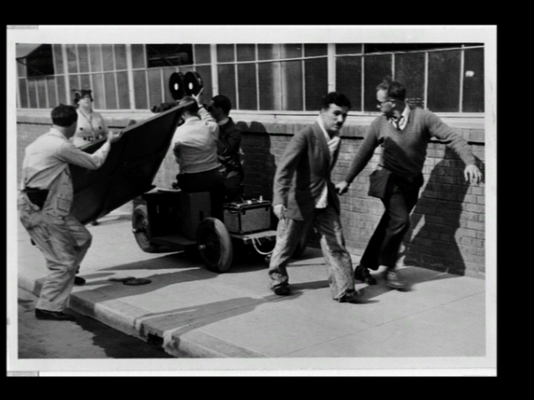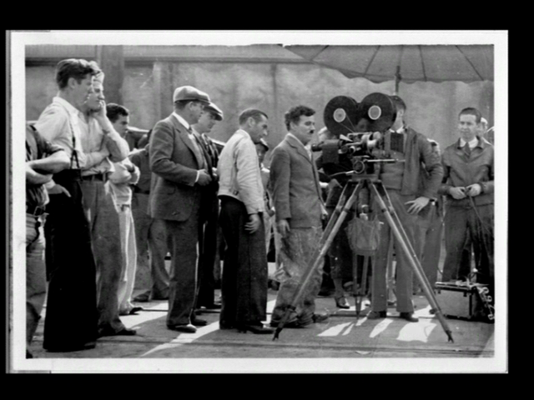Main Content
Lesson 2: The Development of Cinematic Language
Modern Times and the Tramp
Modern Times would use the Tramp for the final time to engage these pressing issues through comedy. Though, as in all of his comedies, he would have the Tramp going through a similar episodic story, but in this case, one that would reveal some of the most pressing problems of the time.
Like most of his other films, he wrote, directed, and produced Modern Times, even experimented with writing dialogue for the film, even going so far as having Paulette Goddard, who was his leading lady and wife at the time, do screen testing for her part as the Gamine, the kind of allegorical character that she played. He eventually scrapped the dialogue and chose to do it as a silent film with sound effects and musical sound track, which he wrote himself. Since he did not have to synchronize his voice, this also gave him the ability to manipulate the speed of the filming. So, if he wanted to make a film sequence more kinetic, he could crank the film slower, so that when it was shown, it would be faster, and vice versa. This gave him a lot more leeway in playing with the image because he didn't have to worry about synchronizing the voice.
 |  |
The sets for the factory and the department store, the two main sets of the film, were built on Chaplin's own studio lot, part of Universal Studios, and the film took about a year to shoot. In many ways, Chaplin was an anomaly, in that he took a long time to do his films. But, since it was his money, it was OK. He was willing to make that sacrifice.
Comedy as a narrative form has certain features that we should think about. What does it do as a form of drama? It has a cyclical structure. People say that the comedic world view is one where, like nature, things always return to the way they were before. For instance, spring begets summer, which goes to fall and winter, and then back to spring. There is a certain kind of naturalism to comedy in that sense. This is captured well by the title of Shakespeare's All's Well That Ends Well. So that would be a prototypical comedic structure. Things end up well in the comedy. The world view that comedy promotes then is along the lines that things will work out in the end. No matter what the characters get into, in the end, things will be OK.
As such, comedy deals with social issues. Natural phenomena can't be, they just are. Social issues are things that people create; things which get in the way of human happiness. Comedy reveals the absurdity of these as part of its function, such as if the Tramp is being thrown out of society because of some silly rule, then that silly rule is absurd. These are two of the features of comedy, a cyclical structure and dealing with social issues.
Comedy is able to deal with certain themes in ways that other things can't. It is said nowadays that some of the best social criticism is caught in comedy, because people can accept it, whereas with people who are speaking to them earnestly or in a straightforward way, sometimes people won't accept a certain cultural criticism in the same way.
For Chaplin, he is concerned with universality. His themes are very universal. Hunger, sadness, coldness, a lack of shelter, all these things are basic themes that are dramatized as feelings for the viewer in Chaplin's comedies.
